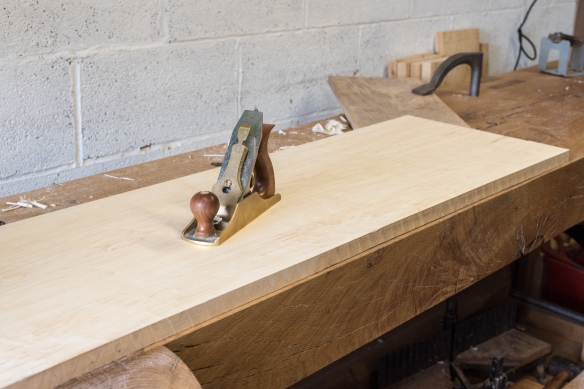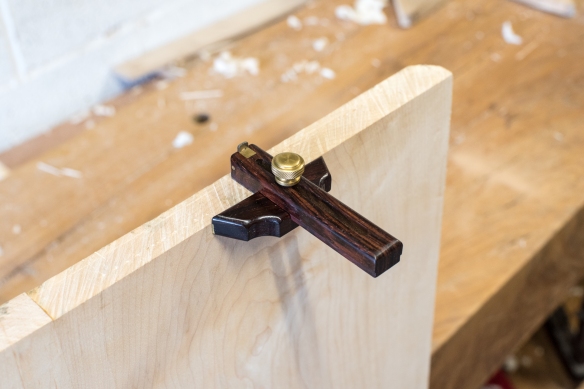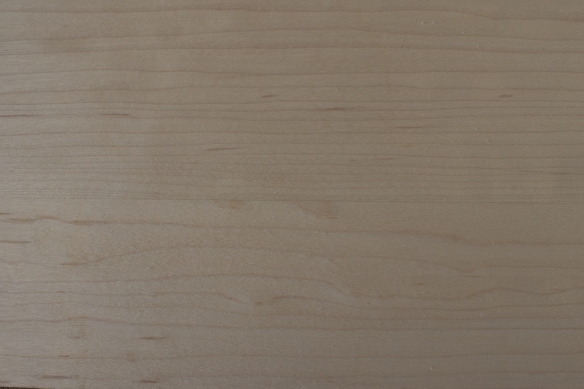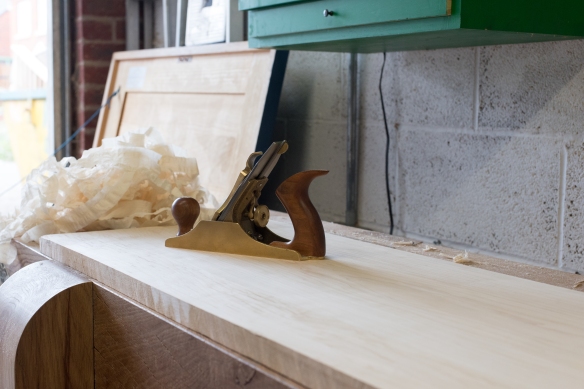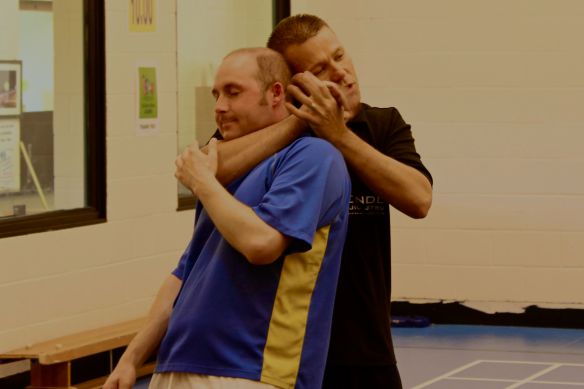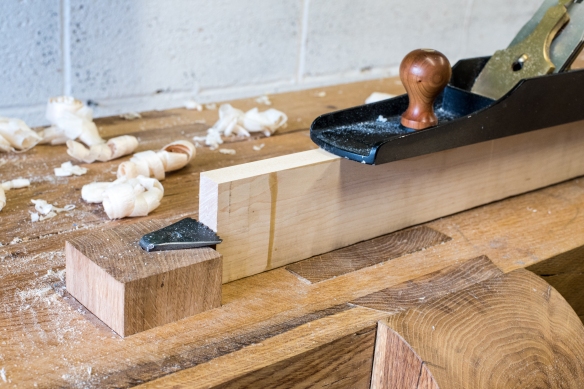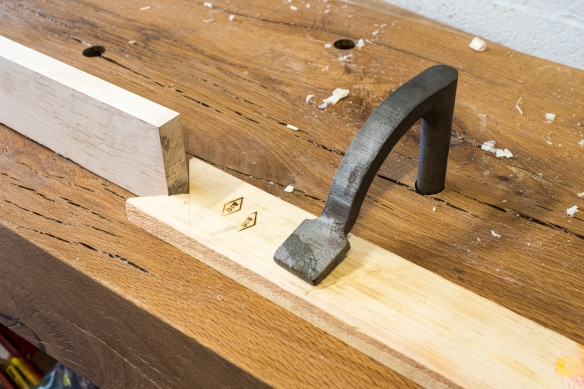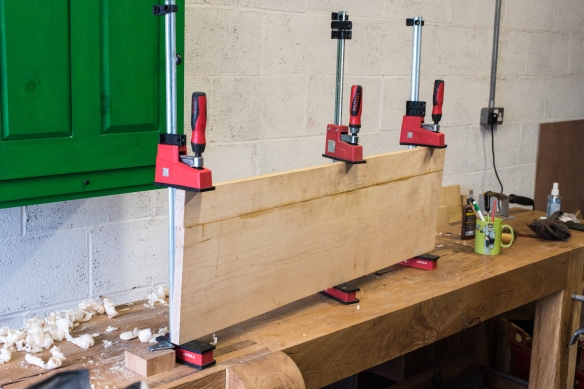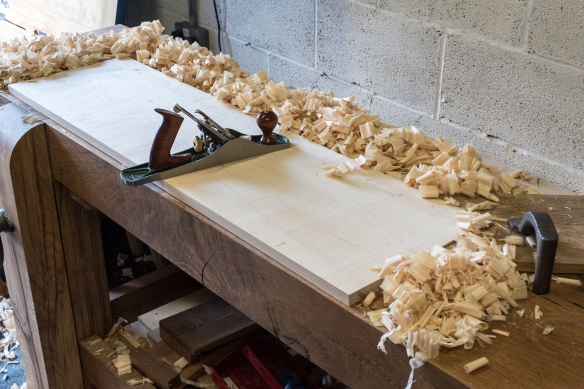
Traversing large boards has never been so enjoyable as it is on the Roubo bench
I’m finding my rhythm with the boarded bookcase project, and enjoying the process. In particular, it is fascinating testing the capabilities and functionality of the Roubo bench as I work.
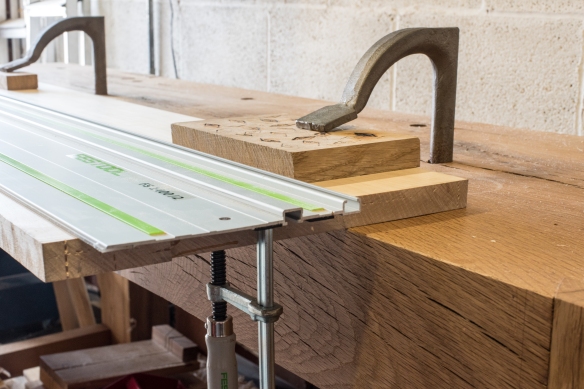
Holdfasts and track saw – combining technologies across centuries for an efficient workflow
This week I’ve been processing yet more maple, which involved working on several faces of the board. As a test, I also decided to see how the bench fared with a hybrid woodworking approach. After all, the design arose at a time when woodworkers were using hand tools exclusively hand tool, but how does it function when power tools are introduced into the mix? I don’t use power tools all that much, but I do have a few which I find useful to keep around, including a Festool tracksaw. Ordinarily I prefer to reach for my Disston D8 when ripping stock, but as a test I set up the tracksaw to rip one edge of the maple panel straight before planing it. Getting a rock solid set up was much easier on the Roubo than my old Sjoberg, and the two Crucible holdfasts held the workpiece in place with the edge to be cut hanging off the edge of the bench. This set up was quick to set up, stable, safe, and allowed for easy operation of the tracksaw – a win by any reckoning. I’m sure that holding workpieces for work with the Festool Domino (which I find indispensible for shop jigs and some other work ) and the router (which I honestly try to use as infrequently as possible) will be as straightforward and dependable. So the Roubo seems to be a solid choice for the hybrid woodworker as much as hand tool purists.
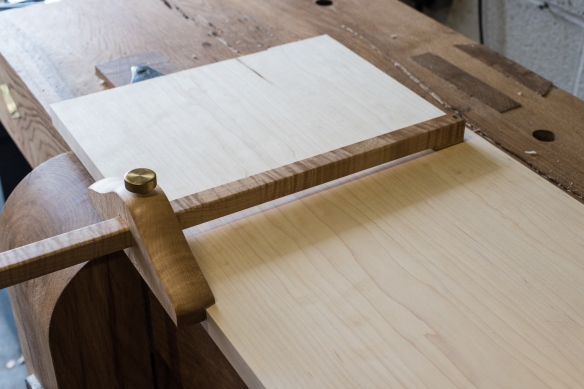
Making the width of the board with the panel gauge – working into the planing stop holds the workpiece steady
The planing stop is also very versatile. While the main function is to hold workpieces in place while planing, I have found it is also very useful for steadying the work while using marking gauges to strike lines. Today I made use of the planing stop for this purpose with the workpiece in two orientations – firstly striking the width of the panel using the Hamilton Toolworks panel gauge, then to gauge the thickness of the panel, with the workpiece stood on it’s side, supported with a does’ foot at the back end. This is much quicker than securing the workpiece in the leg vise. Less time fixing the workpiece in place means a smoother and more efficient work flow.
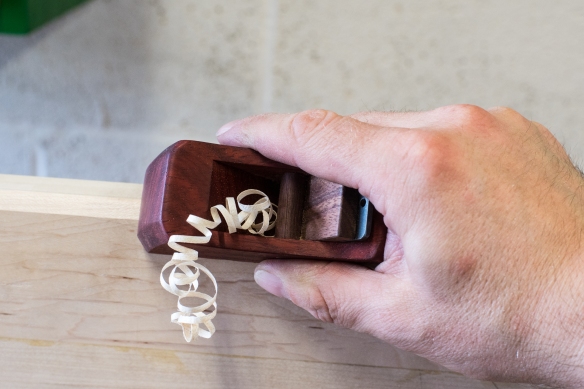
I don’t use this sweet Krenov style block plane by my buddy Jim McConnell as often as I should – here I’m bevelling the far side of the board to avoid spelching when taking a traversing cut
I was also struck by how much the Roubo bench offers a solid working experience when traversing the maple board with my No5 jack plane. While this is a very standard technique in my work, I never got the work holding on my old Sjoberg bench to co-operate when taking heavy traversing cuts – the tail vise just wasn’t up to holding workpieces for traversing, and after a few strokes the work would start to wriggle across the benchtop. Which was both frustrating and an impediment to steady work. In contrast, a single holdfast and the planing stop was enough to secure the 47″ x 13″ maple panel in place for an extended session of traversing with no movement whatsoever despite taking a heavy cut. This is what this bench was made for, and it excels as a planing bench.

Traversing removes the bulk of the waste efficiently, and leaves a wonderful texture. If this were the underside of a shelf I’d leave that texture and call it done, but as this is the side of the bookcase I’ll dress the surface with a smoothing plane for a clean and smooth surface.
I’ve almost finished working the two sides of the bookcase, following which I’ll have an opportunity to see how the bench performs for cutting joinery. I fully expect there is nothing I can throw at this bench which it cannot handle.

